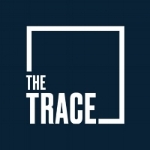I am a freelance journalist focusing my work on deeply reported narratives about criminal justice policy, victims of violence, policing, and punishment. With decades of experience as a reporter and writer, editor, and teacher of magazine journalism, I pursue stories that challenge myths and mistakes surrounding our reactions to violent crime. Below I spotlight some of the stories I have reported and written in recent years. Go to the Articles pages for the full list of my recent work, grouped by major categories: crime victims, policy (policing, prisons, violence prevention, sentencing), gun litigation, and other work. And follow me on social media, where I post about my work and about the issues that I follow.
Featured Stories
Hope can be cultivated in the most unlikely of places and circumstances. Witness this group of youth, who work to save their neighborhood — and themselves — even as some of their own die in a chronically violent and deprived place. I watched their work for three years and learned about the program their mentors use to transform a culture. I told their story for Longreads.
Can a book save our cities’ youth? In this feature for TheAtlantic.com, I explore the work of Thomas Abt and his game plan to use the best evidence-based violence-reduction strategies in cities that have struggled to make their most disadvantaged neighborhoods safer. In Buffalo, New York, Abt’s ideas have had several years to prove themselves — and there are promising signs that they’re doing just that.
Crime Victims series
In a six-part series, I told stories about how we fail crime victims by defining justice for them mainly as punishment of offenders. The series opener, on radical forgiveness, was one of Slate’s most popular long-form articles of 2015. The full six-part series, including stories on victim-centered policing and prisoner counseling, victim-led violence prevention, and restorative justice’s promise and weaknesses, can be found on the Articles page.
Policing That Works
Among the many in-depth features I have written for the non-profit news site The Trace, this one created a scorecard on the most effective policing strategies to reduce gun violence.
Gun prosecutions
To critique Attorney General Jeff Sessions’ strategy for curbing gun violence by increasing federal prosecutions of gun crimes, this piece in Politico and The Trace showed how things have worked out in the city with the highest homicide rate and highest rate of federal gun prosecutions.
A New Victims' Movement
In this feature, I described victim advocacy that's aligned more with criminal justice reform than with tough-on-crime policies. It has begun to get organized and grow beyond its local grassroots to a national platform.
Jobs after prison
In a feature for The New York Times’ Sunday Business report, I told the story of an innovative program that works to overcome a common set of problems in after-prison work programs, which at best place former prisoners in dead-end, low-paying jobs. This program strives for good pay and career-track jobs by staying plugged in to market trends and employers' needs.
Explaining a Family homicide
This best-selling Kindle Single, which grew out of an Oprah magazine feature, investigated the role played by a minister in the unraveling of a family, and the sacrifices a grandmother made out of love for her damaged grandson.







